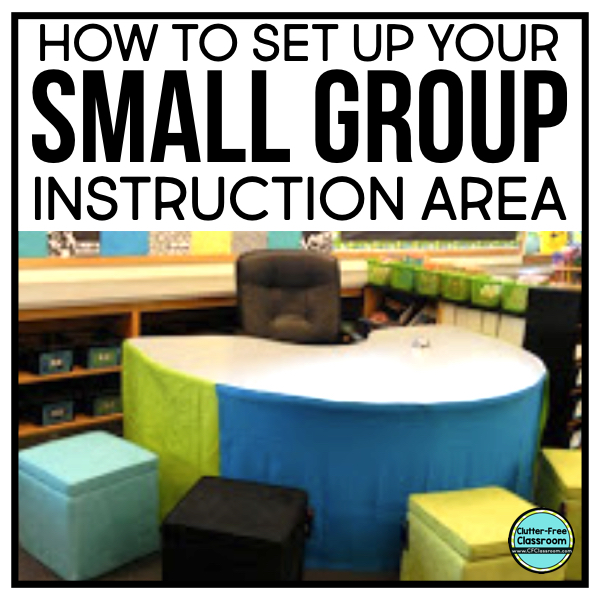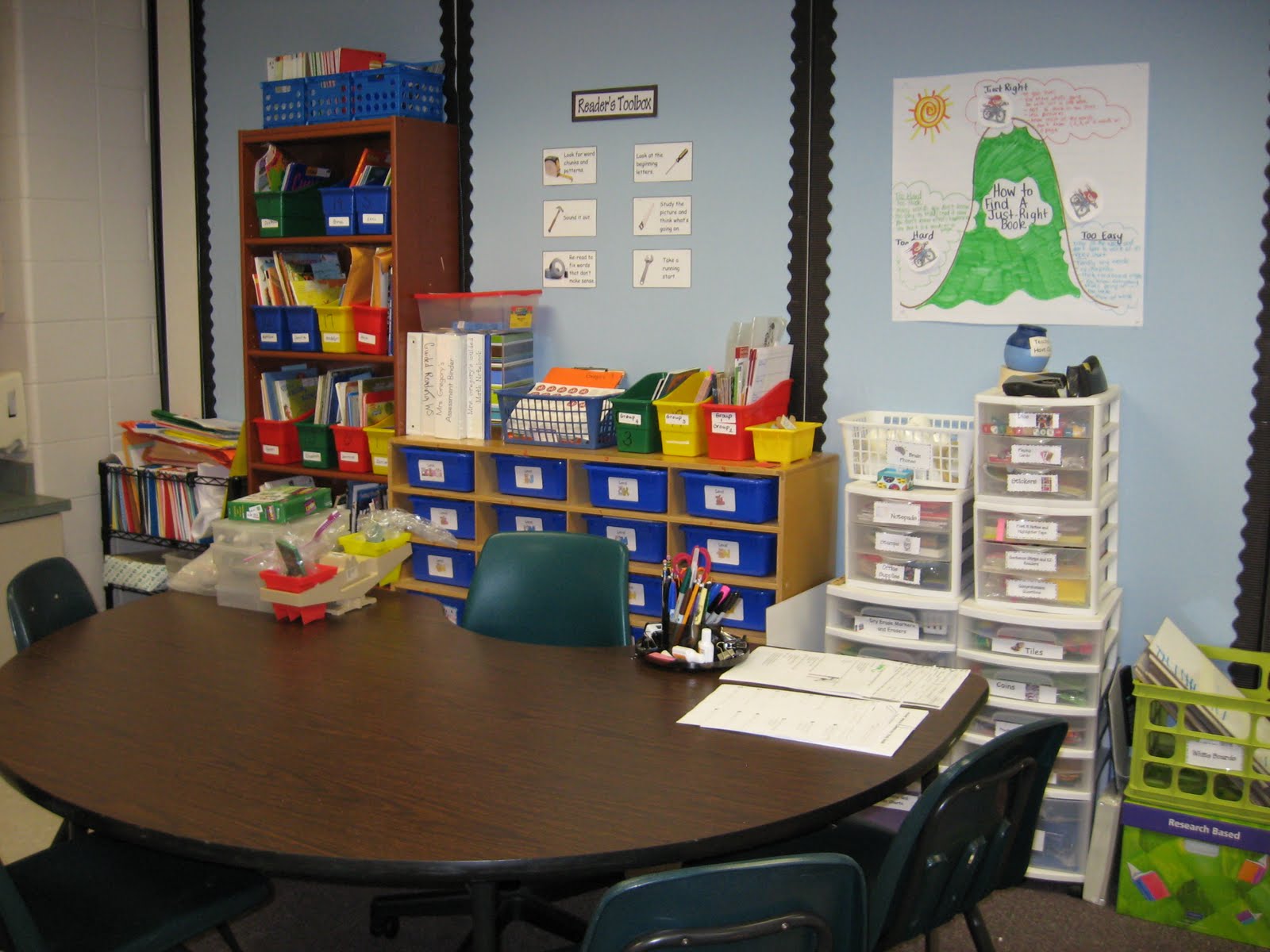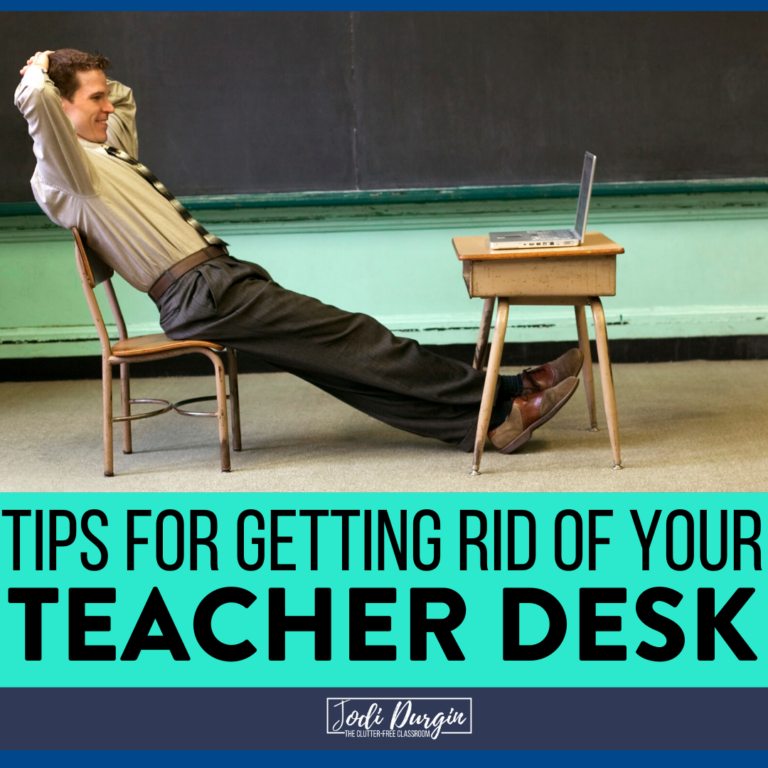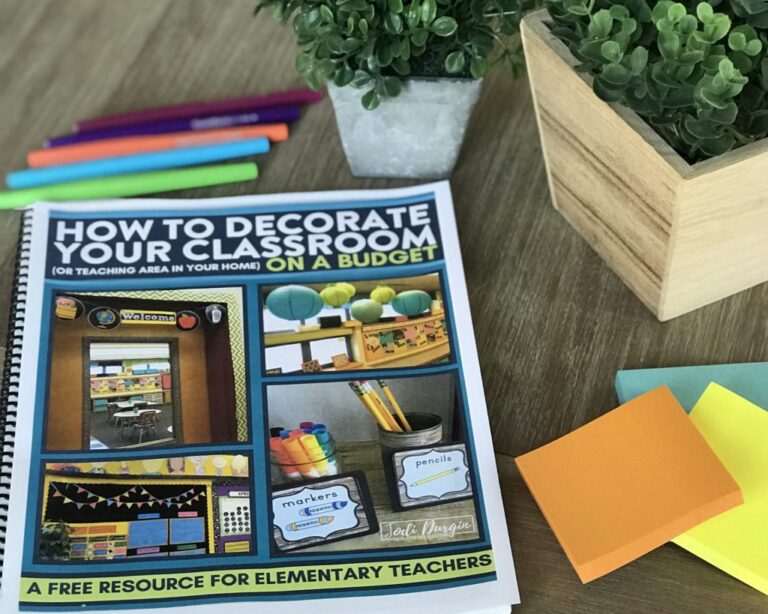The small group instruction area is where the magic happens. It is in those guided groups and 1:1 student lessons that those “lightbulb moments” happen. It is there that you will constantly be reminded of the reasons you love your job. You need to set up for success by designing a space to work with your students on a much more differentiated, individual level. Learn all about setting up your classroom small group instruction area below!

What is a Small Group Instruction Area?
A small group instruction area is a zone in your classroom that is dedicated to small group learning. It typically includes a teacher chair, small table, and 4-6 student chairs. Guided reading and guided math groups can meet here for differentiated lessons that target skills that all of the students need practice with.
What is the Purpose of a Small Group Area?
While some teachers conduct their small-group instruction sitting on the floor with the kids, it is helpful to have a large table for this purpose. It is where you can work with students to fine tune their learning. It allows for differentiated learning and for enriching the students who are ready to move ahead. Having a table for a group to sit at also lends itself to other opportunities. Here are some of the common uses.
- guided reading groups
- assessments
- guided math groups
- writing focus groups
- reading conferences
- editing student writing 1:1
- art projects
- book talks / literature discussions
- hands-on word study lessons
- puzzles and games
- cooperative learning
- science experiments
- looking at maps
- assembling interactive notebooks
- creating lapbooks

8 Ideas for Setting Up Your Small Group Area
Below are 8 ideas to consider when setting up your small group instruction area.
1. Determine How Many Small Group Areas You Need
Most classrooms have one designated small group area. However, if you have other adults (Title 1, reading specialists, math coaches, student teachers, parent volunteers, etc.), you’ll want to consider having more than one area set up for small group work.
2. Take Into Consideration Who Will Use the Space
Determine how many students you plan to work with at a time. Think about the size of your students. I’ve found that a table large enough to seat 6 students and an adult (with ample elbow room) is ideal.
3. Consider Your Teaching Style
It’s important to consider your teaching style and how you will model lessons. Do you need a white board mounted on the wall or an easel positioned behind the table? Would you rather use a small dry erase board at the table?
4. Think about the Space in Relation to Other Parts of the Room
Plan for what the other students will be doing, and where they will be doing it, while you are meeting with groups. Once you have a better idea of what will be happening in the classroom, you will be able to find a location to position the table so that you can see the remaining students when you are working at the table with others.
5. Determine What Furniture You Have and What You Will Need
Teachers often include a table, teacher chair, student seating, and shelves or plastic drawers for teaching materials. Learn more about selecting these items below!
- a table
- a chair for the teacher or other adults
- student seating
- shelves/plastic drawers for teaching materials
Small Group Table
Unfortunately, the type of table you will use is often based on what you have been provided with your classroom furnishings, or what you are able to scrounge up from another part of the school. However, if you are given a budget to select your own furnishings, or if you elect to request one be donated, there are many different options teachers can choose from.
1. Option One
PROS: can fit a lot of students; can easily access students’ work
CONS: small work space; not much room to model lessons; takes up a large amount of floor space; teacher blocks sightline between students which hinders discussion
2. Option Two
PROS: good amount of work space; student work is accessible for individual instruction within the group
CONS: close proximity of the front legs limits seating capacity
3. Option Three
PROS: large surface area for games, projects, experiments and activities
CONS: greater distance between teacher and students
Some teachers who do not have access to an actual “teacher table” position trapezoid tables creatively to form an area that is conducive to small group lessons and activities.
Seating
There are so many options for student seating. Some teachers use the chairs supplied by the school, while others get VERY creative in this area. I myself have experimented with quite a variety of them over the years.
When selecting your chair, be sure to find one that is comfortable! You’ll spend solid stretches of time in the seat so you’ll want to make sure you are comfortable.
Shelving
Just like with the whole class meeting area, you will want to have all of your teaching materials accessible when leading small group lessons and individual student conferences. You could use a rolling cart or portable caddy as described in the last section. Another option is to bring in sets of plastic drawers. Often these can fit under the table.
Some teachers even cover the table with a fabric skirt or a table cloth to create hidden storage with the otherwise wasted space below the table.
 |  |
6. Figure Out What Supplies You Have and What You Will Need
Teachers often include items from this list:
- a caddy to hold student supplies
- dry erase boards and markers for each student
- folders or cardboard presentation boards to use as dividers between students for assessing
- extra pencils, a hand-sharpener, and tissues so that students do not need to leave the area during instruction
- small trash can to be kept under the table for disposing of scraps when students are working
7. Face Students Away from Distractions
Your student seating should ideally be facing away from the classroom so that there is minimal distraction during lessons.
8. Take Into Account Safety Hazards
You definitely want to be aware of potential safety hazards and the liability that comes with bringing in any furnishings not supplied by your school. For example, stools easily slide out from under students if they tip back in them. Plastic crates are not designed to hold the weight of a child when tipped on their side as you sometimes will see in photos online. I highly recommend you obtain permission from both your school and the students’ families if you plan to add any form of alternative seating to your classroom.
In closing, we hope you found this information about setting up your classroom small group instruction area helpful! If you did, then you may also be interested in these posts:





